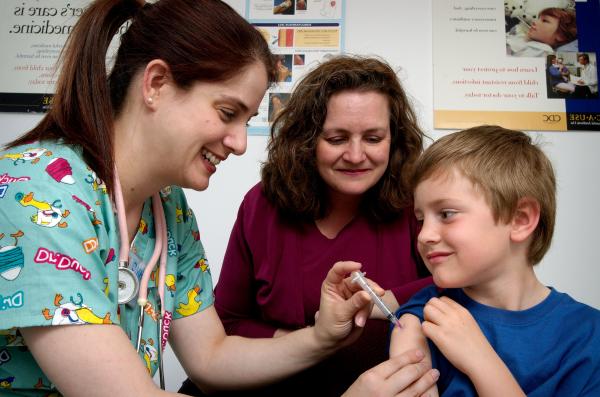
We‘ve written extensively about the move by some to avoid routine vaccinations of children on the totally unproven grounds that some vaccines contain mercury or might cause autism. The truth is, of course, that vaccination not only prevents disease in vaccine recipients but also via herd immunity, can protect those who can’t be vaccinated for medical or other reasons. Considering the coverage anti-vaxxers have garnered at times, one might fear that most children entering school are at risk of measles or chickenpox or other ills. However, some recent statistics from the CDC should help allay these concerns.
Writing in the Morbidity and Mortality Weekly Report, Dr. Michael Underwood and colleagues present data on vaccination coverage of children entering kindergarten during the 2016-2017 school year. They presented data from 49 states and the District of Columbia on the percentage of children aged 4-6 years who received the recommended, among other vaccinations, “5 doses of diphtheria, tetanus, and acellular pertussis vaccine (DTaP), 2 doses of measles, mumps, and rubella vaccine (MMR), and 2 doses of varicella vaccine” as recommended by Advisory Committee on Immunization Practices (1).
The statistics they cited should be at least somewhat reassuring — “Median vaccination coverage was 94.5% for the state-required number of doses of DTaP; 94.0% for two doses of MMR; and 93.8% for two doses of varicella vaccine.”
Overall, the range of coverage was 85.6 percent in Washington DC to 99.6 percent in Maryland. Only 2.0 percent of kindergartners had approved exemptions from at least one vaccine, similar to the percentage in the previous year.
There were some limitations to the data, the authors reported. For example, some state reports were based on census data, while others were based on voluntary responses. Some states included home-school data while others reported such data separately. Such differences limit the state-to-state comparability of the data, the authors noted.
Although the data collection procedures weren’t uniform from state to state, these data should provide some reassurance to parents that in most cases, children entering kindergarten will be protected from most vaccine-preventable diseases, even if they themselves can’t be vaccinated. Of course, there are some areas in which parents elect not to vaccinate their children — data from the different states and localities can help pinpoint such areas and help health authorities target them for additional educational outreach.
1) Robinson CL, Romero JR, Kempe A, Pellegrini C; Advisory Committee on Immunization Practices Child/Adolescent Immunization Work Group. Advisory Committee on Immunization Practices recommended immunization schedule for children and adolescents aged 18 years or younger—United States, 2017. MMWR Morb Mortal Wkly Rep 2017;66:134–5.



